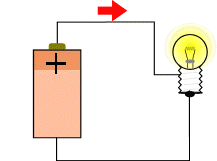
|
 |
|
|
AC (Alternating Current)
- The polarity is continuously reversing or 'Alternating'. In the case
of a UK mains electricity supply this happens 50 times every second.
This is known as the 'Frequency' and is quoted as 50 Hertz. The rating
plate of an appliance will normally show something like: 200 - 230 Volts AC 50 Hz With an AC supply, there is no Positive (+) and Negative (-) as clearly they repeatedly change places. However, we do have Live and Neutral. This is tied up with the earthing arrangements for an AC supply |
DC - (Direct Current) - The polarity is constant and must usually be observed. Most electronic equipment requires a DC supply which usually comes from either batteries or the mains via a power supply unit. | |
|
DIODE (also known as a rectifier) |
||
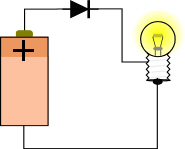 |
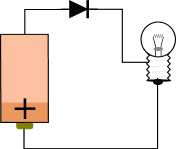 |
|
| Put a diode in the
circuit and current can still flow but only in one direction. |
Reverse the battery
and light stays off because the diode will not let any current pass |
|
|
Flame Conductance and Flame Rectification |
||
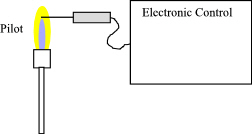 |
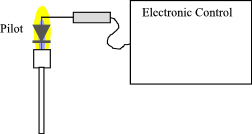 |
|
| Flame conductance relies on
the fact that an electric current will pass through a flame e.g. the
flame is a 'conductor' of electricity. This system can be 'fooled' if the electrode touches earth as it appears to the electronic control as a flame. Page D-6 of the Viper book |
Flame Rectification relies on
the fact that although a flame will conduct electricity, it does so far
better in one direction than the other. In other words, the flame acts
like a diode. This makes for a more robust system because if the
electrode gets bent and touches earth, the electronic control can tell
the difference. Page D-7 of the Viper book. |